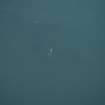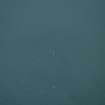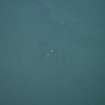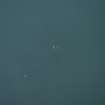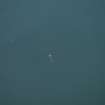Following the launch of trove.scot in February 2025 we are now planning the retiral of some of our webservices. Canmore will be switched off on 24th June 2025. Information about the closure can be found on the HES website: Retiral of HES web services | Historic Environment Scotland
North Carr Beacon
Beacon (Early 20th Century) (1818)-(1821)
Site Name North Carr Beacon
Classification Beacon (Early 20th Century) (1818)-(1821)
Alternative Name(s) Carr Brigs; Carr Briggs; Fife Ness; Fifeness; North Carr Light; Carr Rock Beacon; North Sea; Firth Of Forth; Firth Of Tay
Canmore ID 192811
Site Number NO61SW 25
NGR NO 6471 1153
Datum OSGB36 - NGR
Permalink http://canmore.org.uk/site/192811
- Council Fife
- Parish Crail
- Former Region Fife
- Former District North East Fife
- Former County Fife
NO61SW 25 6471 1153
North Carr Beacon [NAT]
OS 1:10,000 map, 1973.
NLO: Fife Ness [name: NO 638 098]
Carr Brigs [name: NO 645 113].
For (present and successor) Fife Ness lighthouse and coastguard station (NO 63808 09749), see NO60NW 52.
The North Carr Rocks were marked by the first Northern Lighthouse Board buoy in 1809. Between that date and 1818, Robet Stevenson buolt a beacon based on six columns of cast iron clamped to a masonry support and surmounted by a hollow ribbed ball about 25ft [7.6m] above mean sea level. It still survives, but was always considered both 'blind' and 'dumb' as it emitted neither a light nor a sound signal.
As it was considered impossible to build a lighthouse at the site, successive light vessels (named the North Carr) were moored off the rocks from 1887. They were replaced by an automatic buoy in 1975, when a new lighthouse was built on Fife Ness.
Information from RCAHMS (RJCM), 25 April 2006.
R W Munro 1979; K Allardyce and E M Hood 1986; S Krauskopf 2001.
Project (2007)
This project was undertaken to input site information listed in 'Civil engineering heritage: Scotland - Lowlands and Borders' by R Paxton and J Shipway, 2007.
Publication Account (2007)
In 1810 Robert Stevenson designed a 42 ft high stone tower beacon to be placed at the Carr Rock, a tide covered reef hazardous to shipping extending about 134 miles out to sea from the shore. The unlit tower was to have contained machinery, operated by the rise and fall of the tide within a central cavity, to toll a warning bell.
A shore station was set up to build the beacon in 1813 and work at the rock commenced under Stevenson’s direction founding an 18 ft diameter base 16 ft below high-water level, partly by means of cofferdams. Stones were cut and assembled at the shore station and then shipped to site. Because of site difficulties, work proceeded slowly over the next five years and was eventually abandoned after much of the masonry had been swept away by the sea on several occasions, finally, in November 1817, after its completion.
Stevenson then decided on a cast-iron framework beacon, which was erected in 1821 on the 4th course of
the former tower. This beacon, the prototype for beacons later extensively used round the coast of Scotland, was ‘in perfect preservation’ in 1878. It still exists and is regularly checked by the Northern Lighthouse Board who have a lighted buoy nearby. The whole project cost about £5000. Evidence of the Carr Rock workyard can still be seen at Fife Ness on the rocky foreshore, including a level rock base which accommodated circular courses of masonry before being taken via a short railway to the jetty and shipped to site.
An interpretive board at the site provides notional details of the operational arrangements.
In 1843–44 the previously referred to small low-level lighthouse was built on the Isle of May in a position so
that when the two May lights were observed one above the other the mariner knew that he was in line with the
treacherous Carr Rock about eight miles north of the light. This arrangement discontinued and led to the stationing of a succession of lightships until 1975. The ship was replaced by a buoy .
R Paxton and J Shipway 2007
Reproduced from 'Civil Engineering heritage: Scotland - Lowlands and Borders' with kind permission from Thomas Telford Publishers.















